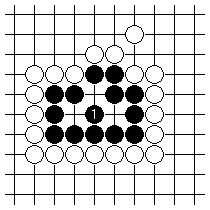

A further difficulty you find is with life-and-death questions; which you phrase in this way:
"When there's the type of pattern that's in the books, I can find the key point with the best of them...

...When it's this simple I'll play at 1 every time to make eyes. But it strikes me that in most cases something more messy is going on. A number of times I've been told I'm making a defensive play that's not required, when that wasn't at all clear to me."
Well, you're correct that the basic patterns aren't the way in which these questions necessarily present themselves over the board. What they do constitute is a fundamental set of pre-solved positions: if you can reduce your actual problem to one of the handful of shapes listed in the books, you then know the answer.
Perhaps it would help if I mentioned some ways to divide up the whole field. Most obviously, you might be attacking a group, or defending it. Initially it is important to master the ordinary eye-making techniques. Not losing groups that had no need to die will pull your level up immediately. Killing the opponent's groups is a way of punishing players who are always too busy interfering with your plans, and leave themselves open at the back, in football parlance. That can come a little later.
Then one can usefully distinguish the techniques to do with making or spoiling single eyes. This is a self-contained, smaller field of study. Perhaps the majority of problems in books on life-and-death are of the type where one space may or may not be enough to provide two eyes. That doesn't mean that these are of greater practical importance - the compiler may simply find this material yields more different types.
A final useful distinction is between those problems that are pattern-based, purely to do with identifying key points, and those with a strong tactical element. For example cutting points affect the life and death of groups - certainly in attacking one ought to take into account any way in which the defender's cutting point may relate to plays inside.
With these preliminaries, let's look at a position from before. It's a representative defensive question, to do with a single eye on the edge, and of tactical type.
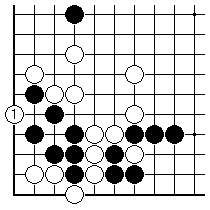
Here's something that might have been raised a previous time. White attacks Black with 1. This is the key point Black wants to construct an eye on the edge. Can Black now survive?
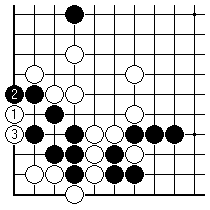
In fact what comes next is obvious enough. Black must play at 2, to prevent White easily connecting out on that side. White must play at 3, or else Black's play there makes an eye.
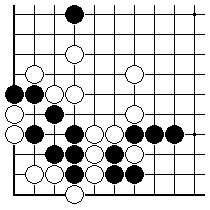
So, after those preliminaries, we get this position, Black to play and live.
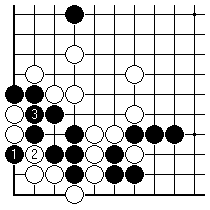
This would be the wrong way. Black cannot gain an eye by capturing two white stones on the edge.
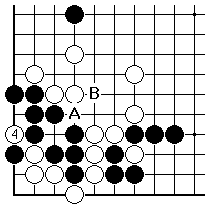
After White 4 Black cannot make a real eye on the edge, just a false one. This takes the pressure off White, who can answer Black A with White B in the centre any time to keep a perfect outside wall. (Conventional life-and-death problems don't have death-or-glory fights as the enclosing stones come under attack; but real ones certainly do.)
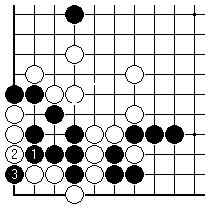
The key to this problem is for Black to increase the size of White's chain by exchanging 1 for 2, then sacrifice with 3.
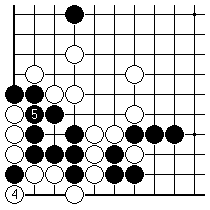
White must take with 4 to maintain the attack, but then Black 5 is sufficient.
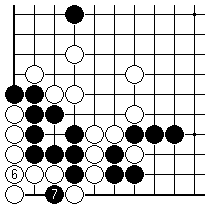
All is revealed: White falls into a snapback.
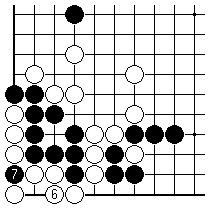
Come what may, Black will be able to take three white stones, as with 7 here. That guarantees the second eye on the edge (check this, even though White can recapture one black stone).
First published 1 June 2000 as On Your Side on MindZine,
Go Learning
© Charles Matthews 2000.